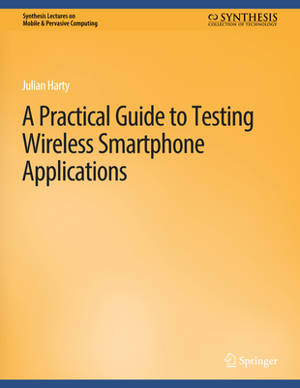
- Retrait gratuit dans votre magasin Club
- 7.000.000 titres dans notre catalogue
- Payer en toute sécurité
- Toujours un magasin près de chez vous
- Retrait gratuit dans votre magasin Club
- 7.000.0000 titres dans notre catalogue
- Payer en toute sécurité
- Toujours un magasin près de chez vous
Description
Testing applications for mobile phones is difficult, time-consuming, and hard to do effectively. Many people have limited their testing efforts to hands-on testing of an application on a few physical handsets, and they have to repeat the process every time a new version of the software is ready to test. They may miss many of the permutations of real-world use, and as a consequence their users are left with the unpleasant mess of a failing application on their phone. Test automation can help to increase the range and scope of testing, while reducing the overhead of manual testing of each version of the software. However automation is not a panacea, particularly for mobile applications, so we need to pick our test automation challenges wisely. This book is intended to help software and test engineers pick appropriately to achieve more; and as a consequence deliver better quality, working software to users. This Synthesis lecture provides practical advice based on direct experience of using software test automation to help improve the testing of a wide range of mobile phone applications, including the latest AJAX applications. The focus is on applications that rely on a wireless network connection to a remote server, however the principles may apply to other related fields and applications. We start by explaining terms and some of the key challenges involved in testing smartphone applications. Subsequent chapters describe a type of application e.g. markup, AJAX, Client, followed by a related chapter on how to test each of these applications. Common test automation techniques are covered in a separate chapter, and finally there is a brief chapter on when to test manually. The book also contains numerous pointers and links to further material to help you to improve your testing using automation appropriately. Table of Contents: Introduction / Markup Languages / Testing Techniques for Markup Applications / AJAX Mobile Applications / Testing Mobile AJAX Applications / Client Applications / Testing Techniques for Client Applications / Common Techniques / When to Test Manually / Future Work / Appendix A: Links and References / Appendix B: Data Connectivity / Appendix C: Configuring Your Machine
Spécifications
Parties prenantes
- Auteur(s) :
- Editeur:
Contenu
- Nombre de pages :
- 129
- Langue:
- Anglais
- Collection :
Caractéristiques
- EAN:
- 9783031013515
- Date de parution :
- 20-10-09
- Format:
- Livre broché
- Format numérique:
- Trade paperback (VS)
- Dimensions :
- 216 mm x 279 mm
- Poids :
- 399 g

Les avis
Nous publions uniquement les avis qui respectent les conditions requises. Consultez nos conditions pour les avis.






